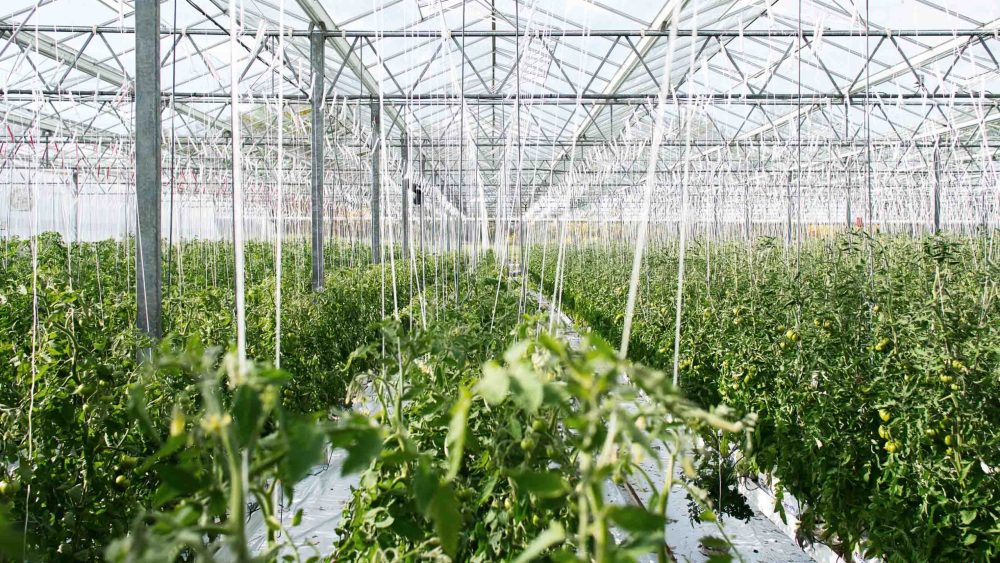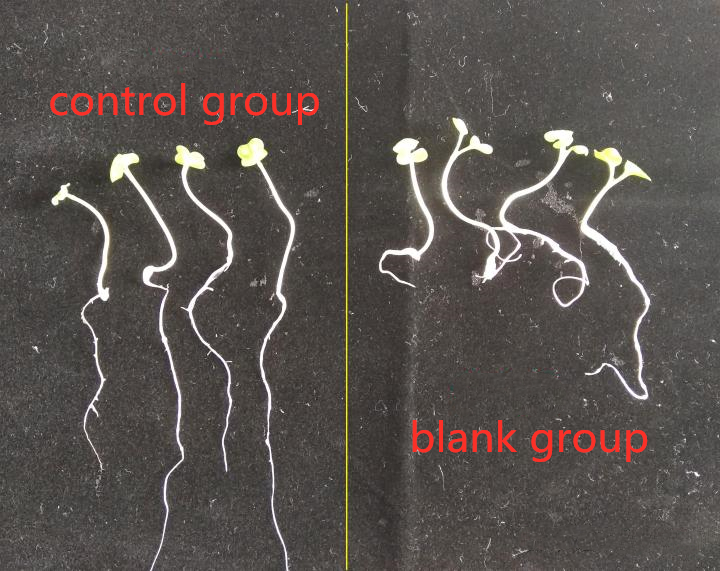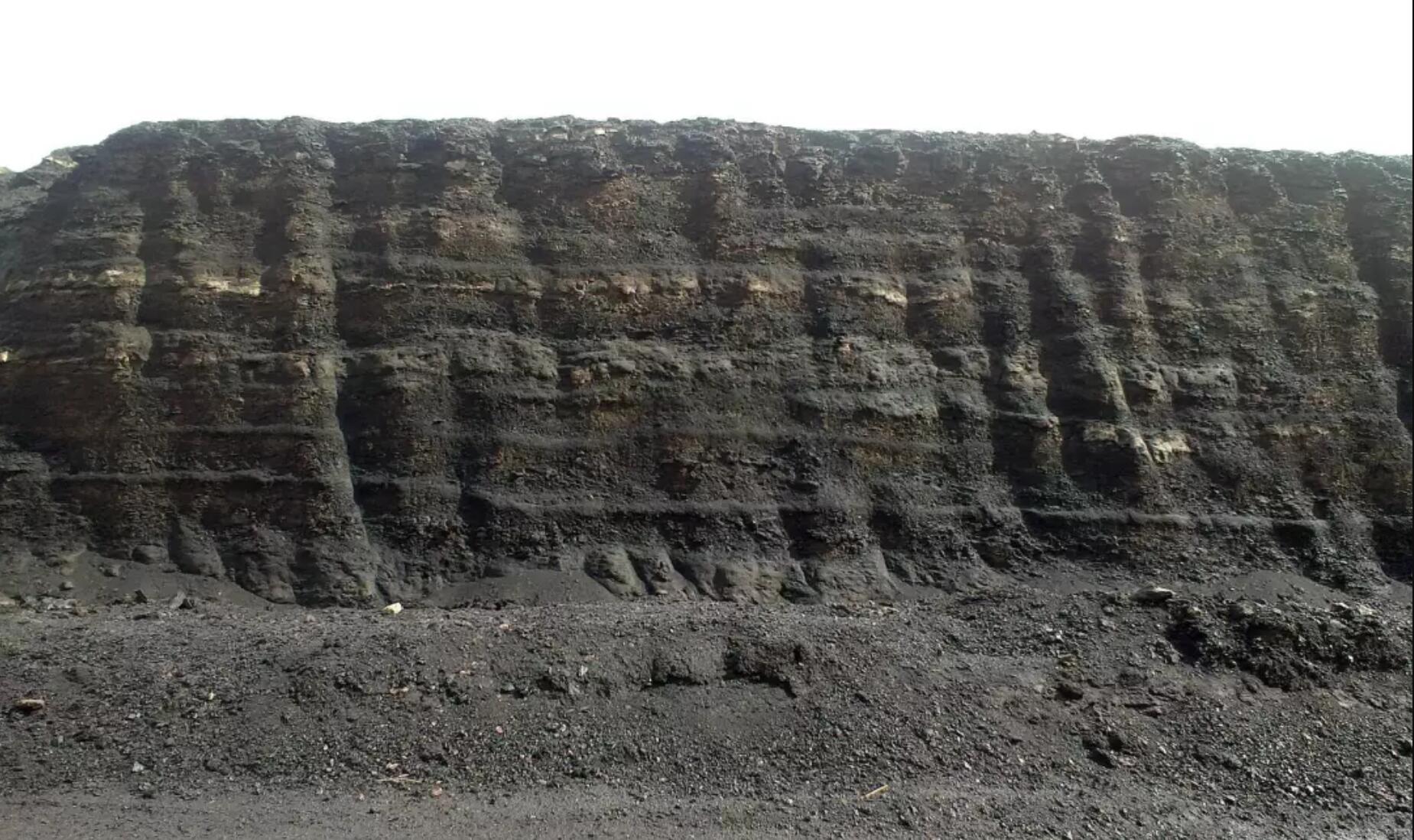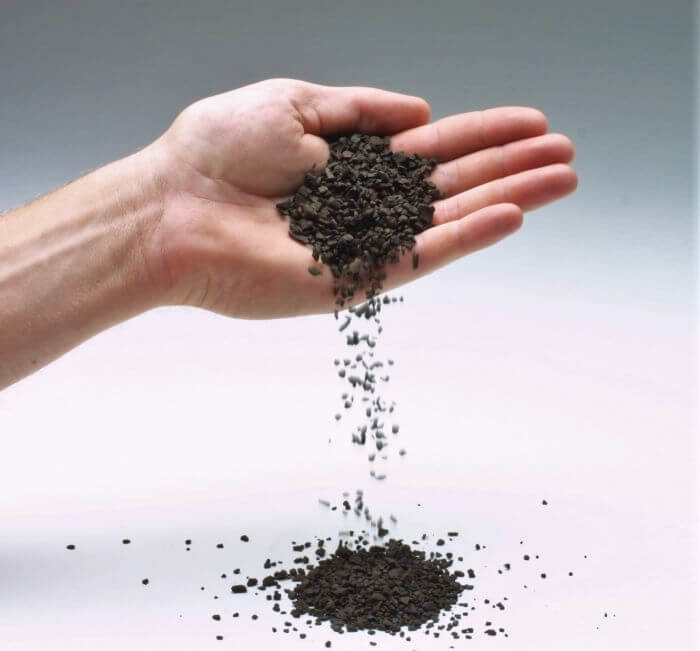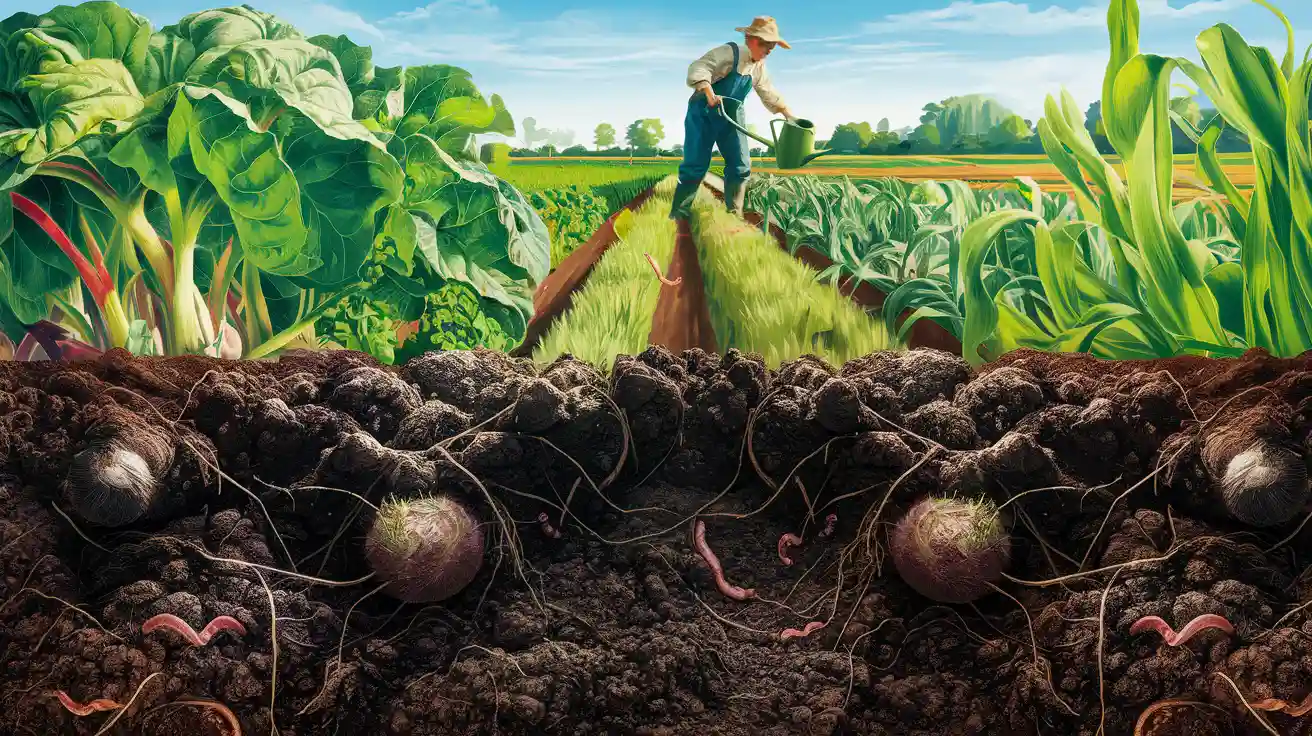
Sustainable farming uses natural ways to care for the soil, which also helps grow more crops. Humic fulvic acid is a great helper for this. These natural substances enhance soil quality by adding nutrients and promoting root growth. They also reduce the need for chemical fertilizers, making nutrients more effective and keeping nature healthier.
Recently, more farmers have been utilizing these beneficial substances. For example:
- Humic fulvic acid fertilizers strengthen plants and improve soil health.
- Fulvic acids assist crops in growing better and addressing issues like cracked tomatoes.
By improving soil health and strengthening crops, humic fulvic acid plays a significant role in making farming more eco-friendly.
Key Takeaways
- Humic and fulvic acids make soil healthier by adding nutrients.
- They help roots grow better and stronger.
- These acids lower the need for chemical fertilizers, helping the environment.
- Adding them during planting helps crops grow faster and bigger.
- They help plants take in nutrients, making crops stronger and healthier.
- Using them often improves soil and supports eco-friendly farming.
What Are Humic and Fulvic Acids?
Definition and Origin
Humic and fulvic acids come from decayed plants and animals. These natural compounds are important for farming that protects the environment. They make soil healthier and help crops grow better. Studies show humic acids improve soil structure, hold water, and provide nutrients. Fulvic acids make nutrients easier for plants to absorb, reducing the need for chemical fertilizers.
Scientists have studied these acids for hundreds of years. In 1786, Achard first extracted humic acid using a special method. Later, in 1819, Braconnot created a black substance called “artificial ulmin.” In 1839, Mulder showed how cellulose connects to humic acid.
| Year | Scientist | Discovery or Contribution |
|---|---|---|
| 1786 | Achard | First humic acid extraction using alkali methods. |
| 1819 | Braconnot | Made “artificial ulmin” by adding acid to starch. |
| 1839 | Mulder | Linked cellulose to humic acid production. |
Key Differences Between Humic and Fulvic Acids
Humic and fulvic acids come from the same sources but are different. Humic acids have bigger molecules and help soil hold water and stay strong. Fulvic acids are smaller, dissolve in all pH levels, and carry nutrients to plants.
| Feature | Humic Acid | Fulvic Acid |
|---|---|---|
| Molecule Size | Large (10,000 to 100,000) | Small (1,000 to 10,000) |
| Solubility | Dissolves in alkaline, not acidic conditions | Dissolves in all pH levels |
| Soil Benefits | Improves soil, removes toxins, holds water | Moves nutrients into plants |
| Nutrient Transfer | Helps roots and shoots grow | Makes nutrients easier for plants to absorb |
| Use | Works mainly in soil | Helps plants take in nutrients |
Role in Soil and Plant Health
Humic and fulvic acids are great for soil and plants. Humic acids help soil hold water, breathe, and grow good microbes. This makes nutrients easier for plants to use. Fulvic acids help plants take in nutrients and grow roots, leaves, and stems.
- Humic acids boost plant height and green color.
- Fulvic acids help crops like cucumbers and corn absorb nutrients.
- Both acids increase protein and sugar in grains like wheat.
- They improve soil’s ability to hold water and grow microbes.
Using humic and fulvic acids can make your soil healthier. Your crops will grow stronger, helping you farm in a way that’s good for the planet.
Benefits of Humic and Fulvic Acids in Agriculture

Improving Soil Structure and Fertility
Humic and fulvic acids help make soil better for farming. They stick soil particles together, forming small clumps. This improves airflow and helps the soil hold water, which plants need to grow. Research shows humic acids reduce soil acidity and add nutrients, making soil richer. For example, fertilizers with humic acid improve soil and grow more crops than regular fertilizers.
Humic acids also change how soil organic matter is built. Studies show organic fertilizers with humic substances lower harmful carbon and increase helpful carbon. This makes the soil healthier for plants and better for growing crops.
Helping Plants Absorb Nutrients
Humic and fulvic acids help plants take in nutrients. Fulvic acids act like helpers, carrying minerals like zinc and potassium to plants. This ensures plants get what they need to grow well. For example, spraying fulvic acid on leaves increases chlorophyll by 45% and carotenoids by 46.7%. This helps plants make food and grow stronger.
Humic acids also help soil keep nutrients from washing away. This means plants get a steady supply of food. Together, these acids make crops healthier and increase harvests.
Increasing Microbial Activity in Soil
Humic and fulvic acids also help good microbes grow in soil. These microbes break down organic matter and release nutrients for plants. Fulvic acids boost soil microbes by improving how soil transfers energy.
Studies show adding fulvic acid increases soil microbe activity by 88%. Artificial humic substances made from farm waste also raise organic carbon in soil. This supports microbes and makes soil more fertile.
By helping microbes thrive, humic and fulvic acids keep soil healthy. This supports farming that is good for the environment.
Promoting Plant Growth and Stress Resistance
Humic and fulvic acids help plants grow and handle stress better. These natural substances improve how plants take in nutrients and stay healthy.
Humic acids activate special enzymes in roots. This helps plants absorb important nutrients like nitrates. Stronger roots mean healthier crops. Fulvic acids make plant cells easier for nutrients to enter. For example, pistachio plants treated with fulvic acid had more potassium and zinc. This led to better growth and bigger harvests.
Tests on alfalfa (Medicago sativa) showed amazing results. Fulvic acid increased nodules on roots, which help plants use nitrogen. European alfalfa varieties treated with fulvic acid grew more and produced higher yields. Using humic fulvic acid can make crops grow better and need fewer chemical fertilizers.
These acids also help plants deal with stress. Problems like drought, salty soil, or extreme weather can harm crops. Humic and fulvic acids improve nutrient absorption and activate enzymes that help plants recover. This makes plants stronger and able to bounce back faster.
Adding these substances to your soil improves plant growth and soil health. They make soil richer and help crops survive tough conditions.
Tip: Use humic and fulvic acids often to grow stronger crops and get bigger harvests.
Top Humic and Fulvic Acid Products for Sustainable Farming
Humic Growth Solutions Extracted Humate Products
Humic Growth Solutions makes products to improve soil and crops. These products have activated humic acids that help plants grow and use nutrients better. Tests show these products increase crop yields for vegetables like wheat, barley, and potatoes. For example, treating potato tubers with humate solutions boosts tuber growth when benz(a)pyrene (BaP) levels are adjusted.
These products can be added to soil to make it healthier. They help soil hold water, keep nutrients, and grow good microbes. Using humate products can lead to stronger crops and eco-friendly farming.
Tip: Apply humate products during planting or spray on leaves for better results.
Black Earth Alpha Plus (3.5% Humic Acid, 1.5% Fulvic Acid)
Black Earth Alpha Plus mixes humic and fulvic acids to improve soil and crops. It helps plants absorb nutrients and makes soil stronger. Research shows humic acid potassium in this product increases corn yields by 25% compared to regular fertilizers.
Studies using methods like ANOVA and regression prove its effectiveness. For example:
| Statistical Method | What It Does |
|---|---|
| ANOVA | Checks how tillage and fertilizers affect crop yield. |
| LSD Criteria | Finds the best treatments with p < 0.05 significance. |
| Correlation Estimates | Tracks nutrient use and soil health over time. |
| Regression Models | Predicts yield improvements from soil nutrients and amendments. |
Using Black Earth Alpha Plus improves soil health and crop quality while reducing chemical fertilizer use.
Live Earth Humate Soil Conditioner
Live Earth Humate Soil Conditioner is a natural fertilizer that helps soil and plants. It contains humic acids from old organic deposits, making it great for farming. Studies show it improves plant growth, root health, and photosynthesis in crops like potatoes. Even in dry conditions, it increases fresh tuber yields.
Field tests also show it fixes nutrient problems. For example:
| Study Focus | Results | Effect on Plants |
|---|---|---|
| Iron Supply | Fe–HA and FA complexes help iron-deficient plants. | Better growth in soils lacking iron. |
| Humic Acids | Improved plant biomass, root health, and photosynthesis. | Stronger potato growth under tough conditions. |
Using Live Earth Humate Soil Conditioner boosts soil fertility, supports microbes, and grows healthier crops. It’s perfect for farmers wanting eco-friendly solutions for better farming.
FULVAGRA Liquid 25 (Aquatic Fulvic Acid-Based)
FULVAGRA Liquid 25 is a special product for eco-friendly farming. It comes from water-based sources, making it full of fulvic acids. Its liquid form makes it easy to use and quickly absorbed by soil and plants. This helps improve soil health and grow more crops without needing many chemical fertilizers.
The fulvic acids in FULVAGRA Liquid 25 help deliver nutrients to plants. They carry important minerals like potassium and magnesium straight to plant cells. This makes it easier for plants to take in nutrients and grow strong. For example, when used on tomatoes or cucumbers, it helps them absorb nutrients better, leading to healthier plants and bigger harvests.
This product also improves soil by helping it hold water and nutrients. It creates a good environment for helpful microbes, which make the soil richer. Using FULVAGRA Liquid 25 keeps your soil healthy and productive for a long time. Its eco-friendly formula is perfect for farmers who want to protect the environment.
Tip: Spray FULVAGRA Liquid 25 on leaves or mix it with water for even spreading across your fields.
GS Plant Foods Organic Liquid Humic Acid with Fulvic
GS Plant Foods Organic Liquid Humic Acid with Fulvic is great for improving soil and crops. It combines humic and fulvic acids to give a complete solution for sustainable farming. Its organic formula helps your soil without adding harmful chemicals.
This product boosts soil microbes, which are tiny helpers in the soil. The humic acids help good bacteria and fungi grow while reducing bad ones. This makes the soil healthier and better for plants. The fulvic acids improve how microbes work by helping with nitrogen and phosphorus processes. These processes make nutrients easier for plants to use, helping them grow steadily and produce more.
It also makes crops stronger by helping them take in nutrients. Fulvic acids act like carriers, bringing minerals directly to plant cells. This increases chlorophyll, improves photosynthesis, and makes plants greener and healthier. Whether you grow vegetables, grains, or fruits, this product can help you get better results.
Note: Use GS Plant Foods Organic Liquid Humic Acid with Fulvic early in plant growth. This gives your crops the nutrients they need from the start.
How to Use Humic and Fulvic Acid Products
Ways to Apply for Different Crops
Using humic and fulvic acids the right way helps crops grow better. Different crops and growth stages need different methods:
- Mix humic and fulvic acids with starter fertilizers when planting. This helps plants get nutrients early and reduces stress.
- Add these acids near roots as crops grow for extra nutrients.
- Spray liquid humic or fulvic acids on leaves during key growth times. This gives plants a quick boost and improves quality.
Studies show these methods work well in many conditions. For example:
- Barley grew better in salty soils with humic and fulvic acids.
- Adding fulvic acid to phosphorus fertilizers made plants taller.
- Humic acid worked better than fulvic acid for overall plant growth.
How Much to Use
Using the right amount is important for good results. Start small and adjust based on your crop’s needs. For most crops:
- Use 1–2 gallons of liquid humic acid per acre.
- Apply 10–20 pounds of granular humic acid per acre.
- Spray 1–2 quarts of fulvic acid per acre on leaves.
Always check the product label for exact instructions. Using too much can harm your soil, so watch your plants and soil closely.
Tips for Best Results
Follow these tips to get the most out of humic and fulvic acids:
- Apply them during planting or early growth for the best effects.
- Combine them with organic or chemical fertilizers to improve nutrient use.
- Avoid using them in bad weather like heavy rain or drought.
- Test your soil often to keep nutrients and organic matter balanced.
These acids also help trap harmful metals, keeping them from hurting plants. This improves soil health and protects crops over time. By following these steps, you can farm in a way that’s good for both your crops and the environment.
Humic and fulvic acids are key for eco-friendly farming. They make soil healthier, improve nutrient use, and grow better crops. By needing fewer chemical fertilizers, they save money and protect nature. These acids hold nutrients and water in the soil, keeping it fertile for years.
| Benefit | Description |
|---|---|
| Less Fertilizer Needed | Cuts down on chemical fertilizers, saving money and reducing harm. |
| Better Crops and Yields | Improves crop size, taste, and nutrients. |
| Healthier Soil Over Time | Adds organic matter, making soil stronger and more fertile. |
| Stops Nutrient Loss | Keeps nutrients in soil, preventing water pollution. |
| Prevents Soil Erosion | Builds stronger soil to stop erosion and keep land usable. |
These acids also help soil stay strong, absorb nutrients, and hold water, which plants need to grow well.
| Benefit | Description |
|---|---|
| Stronger Soil | Stops soil from getting hard and helps roots find nutrients. |
| Better Nutrient Use | Helps plants take in important nutrients like nitrogen and potassium. |
| Higher Crop Yields | Increases the amount of crops grown with these acids. |
| Holds More Water | Keeps soil moist so plants don’t dry out. |
Using humic and fulvic acids can change how you farm. They create better soil, stronger plants, and a greener future. Start using these natural helpers now for lasting farming success.
FAQ
When should I use humic and fulvic acids?
Apply humic and fulvic acids during planting or early growth. This helps plants get nutrients when they need them most. For older crops, use them during important growth stages to improve health.
Can humic and fulvic acids replace chemical fertilizers?
They reduce the need for chemical fertilizers but can’t fully replace them. These acids make nutrients work better, so you use fewer chemicals. Mixing them with organic or chemical fertilizers works best for eco-friendly farming.
Are humic and fulvic acids okay for organic farming?
Yes, they are natural and safe for organic farming. These acids come from decayed organic matter and improve soil without harming nature. Always check labels to ensure they meet organic farming rules.
How do humic and fulvic acids help soil?
Humic acids improve soil structure, hold water, and grow microbes. Fulvic acids help plants take in nutrients more easily. Together, they make soil richer and better for farming over time.
Can I use humic and fulvic acids on all crops?
Yes, they work on vegetables, grains, and fruits. Change how you apply them based on the crop and its growth stage. Follow product directions for the best results.
Tip: Test your soil first to know what it needs before using humic and fulvic acids.


